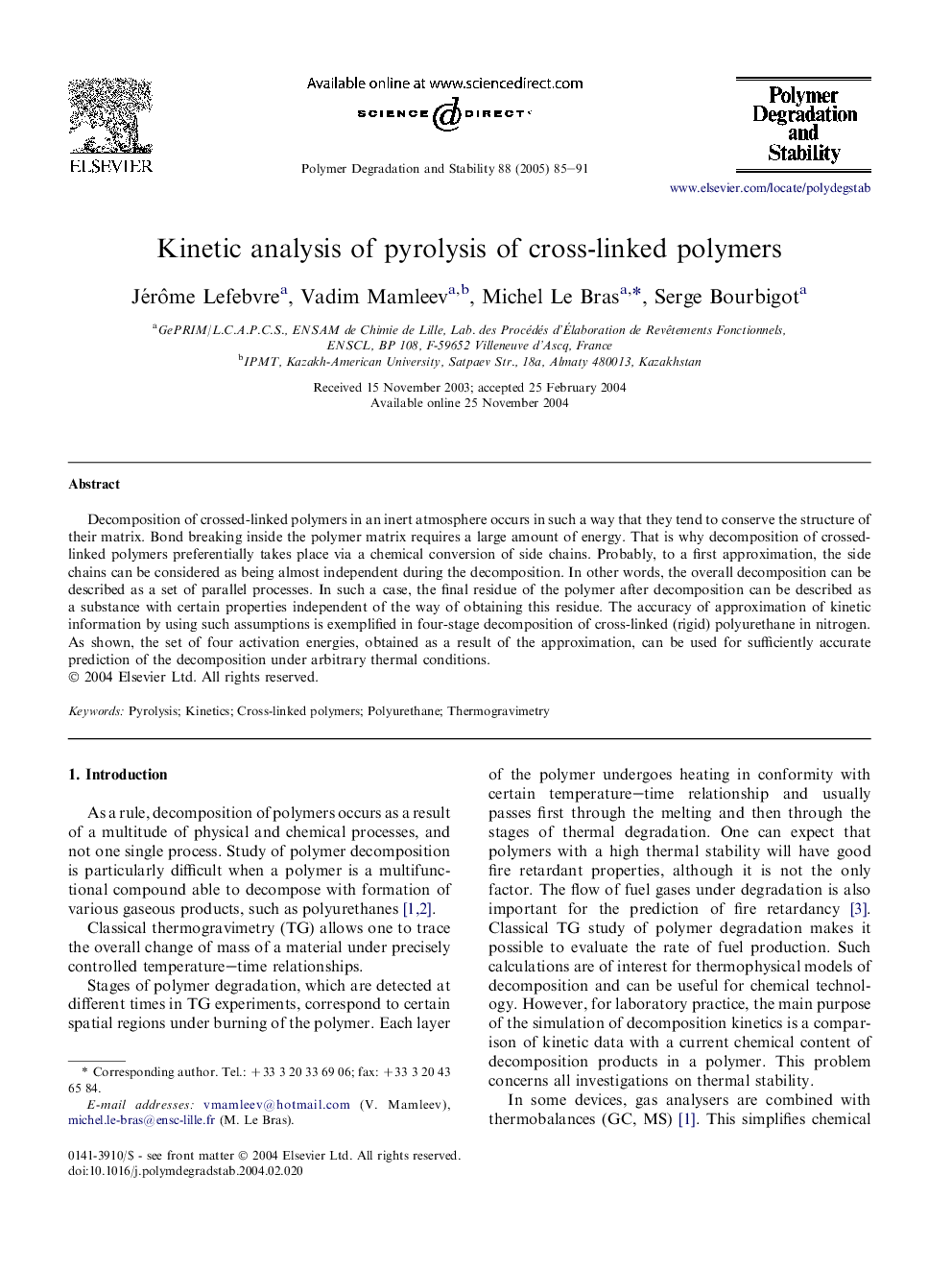| Article ID | Journal | Published Year | Pages | File Type |
|---|---|---|---|---|
| 9560752 | Polymer Degradation and Stability | 2005 | 7 Pages |
Abstract
Decomposition of crossed-linked polymers in an inert atmosphere occurs in such a way that they tend to conserve the structure of their matrix. Bond breaking inside the polymer matrix requires a large amount of energy. That is why decomposition of crossed-linked polymers preferentially takes place via a chemical conversion of side chains. Probably, to a first approximation, the side chains can be considered as being almost independent during the decomposition. In other words, the overall decomposition can be described as a set of parallel processes. In such a case, the final residue of the polymer after decomposition can be described as a substance with certain properties independent of the way of obtaining this residue. The accuracy of approximation of kinetic information by using such assumptions is exemplified in four-stage decomposition of cross-linked (rigid) polyurethane in nitrogen. As shown, the set of four activation energies, obtained as a result of the approximation, can be used for sufficiently accurate prediction of the decomposition under arbitrary thermal conditions.
Related Topics
Physical Sciences and Engineering
Chemistry
Organic Chemistry
Authors
Jérôme Lefebvre, Vadim Mamleev, Michel Le Bras, Serge Bourbigot,
